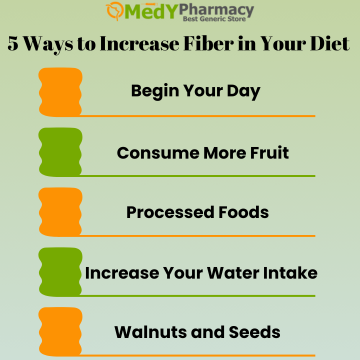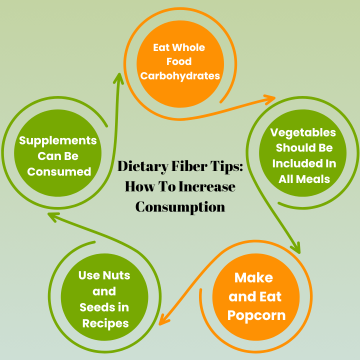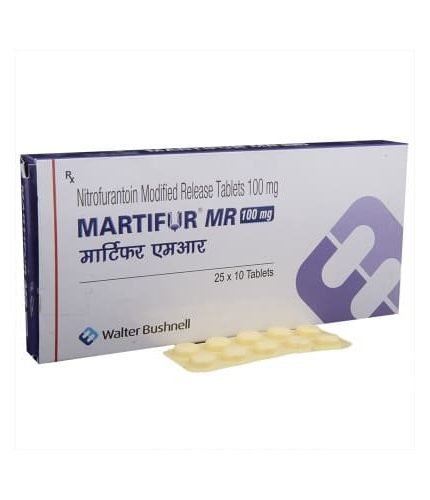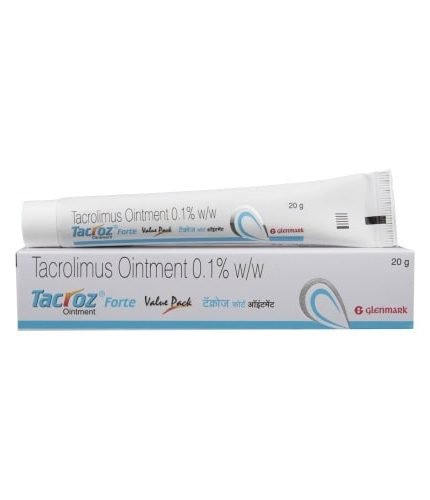Introduction:
Adequate fiber intake is critical to your health. This supplement offers various advantages, including lowering constipation, aiding in weight reduction, and maintaining weight loss over time.
It may also lower your cholesterol levels and your risk of developing diabetes and heart disease.
Some varieties may also be beneficial to digestive health since they are prebiotics, which means they aid in the growth of good bacteria in the stomach.
However, the majority of people’s diets still lack fiber.
What Is Fiber?
Many people equate fiber with gut health and bowel function. However, eating high-fiber foods can do much more than keep you regular. It can reduce your risk of heart disease, stroke, and diabetes, enhance skin health, and help you lose weight. It might assist in avoiding colon cancer.
Fiber, often known as roughage, is the component of plant-based diets that the body cannot digest. It goes through the body undigested, keeping your digestive system clean and healthy by encouraging regular, and full bowel motions. It also binds to cholesterol and toxic carcinogens, removing them from the body.
- Insoluble Fiber:
Insoluble fiber doesn’t dissolve in water. Fiber prevents constipation by bulking up feces. It is present in whole grains, cereals, and vegetables like carrots, celery, and tomatoes.
Foods rich in this type of fiber can help you feel full. They also help to relieve constipation by shortening the time it takes for feces (poo) to travel through your body.
Some soluble fiber can lessen the amount of cholesterol absorbed by your small intestine.
When consumed in conjunction with a low-fat diet, soluble fiber can also assist in reducing blood cholesterol levels.
If you have diabetes, soluble fiber can assist in keeping your blood glucose levels stable.
- Soluble Fiber:
Soluble fiber dissolves in water and aids with blood sugar and cholesterol control. Soluble fiber, when combined with fluids in the colon, forms a gel that can firm up loose stools. Barley, oatmeal, beans, nuts, and fruits like apples, berries, citrus fruits, and pears are also good sources.
Because insoluble fiber absorbs water, it softens bowel contents and helps to regulate bowel motions (poos). This reduces the likelihood of constipation.
- Resistant Starch
Resistance starch is another form of carbohydrate that is difficult to absorb. Different methods of cooking can result in varying levels of resistant starch.
Prepare slightly uncooked pasta and cooled potatoes. Ingredients: pasta, rice, and underride bananas.
In general, less processed foods have more resistant starch.
Resistant starch has the added benefit of fermenting. Fermentation creates chemicals that serve to maintain the health of the intestinal lining.
What Functions May Fiber Provide In The Body?
Although we still don’t know much about fiber, there is a lot of research that suggests it has various health benefits. Can help keep our digestive system healthy by adding weight to our feces, making them simpler to pass. This can help prevent constipation.
Can also help us stay at a healthy weight. Why? Foods high in fiber can help us feel fuller, reducing the need to eat throughout the day.
- Cardiovascular problems include heart disease and stroke.
- Bowel cancer
- Type II diabetes
It is a feature that many people identify with fiber, and the reason for this is straightforward. Some fibers can bulk up your stools, affecting the rate at which food travels through the gut. This is known as the gut transit time. Fiber gives feces volume by absorbing water, which softens them and makes them easier to pass.
Although much remains to be discovered, it is assumed that a fiber-rich diet may help boost the amount of ‘good’ bacteria in the gut. According to research, some foods, such as wheat, beans, and pulses, act as ‘food’ for ‘good’ bacteria, encouraging them to proliferate and create compounds that are thought to have health benefits.
Much more research is needed before we can fully grasp how our food affects gut microorganisms. However, eating a nutritious diet that contains a range of fiber types may be good for our gut microbiome.
Why Is Fiber So Important In Our Diets?
A considerable amount of fiber (also known as roughage) can lower the risk of heart disease, stroke, type 2 diabetes, and colon cancer. When we eat fiber-containing foods, we feel fuller, and a fiber-rich diet can help with digestion and prevent constipation.
As part of a healthy and balanced diet, we should increase our daily intake to 30 grams. We must find strategies to enhance our fiber intake because most adults consume less than 20 grams each day.
More ED Products, Such As,
How Much Fiber Should I Consume?
Adults should consume 30 grams of fiber per day, according to current recommendations. Currently, the average intake is around 20g per day, so most of us have a long way to go. To attain 30g, make sure that your snacks, in addition to higher-fiber meals, are high in fiber.
The good news is that most sources can be incorporated into a healthy, balanced diet to help protect against heart and circulatory disease. Fruit, vegetables, whole grains, beans, pulses, nuts, and seeds are all foods to look out for. Check the nutritional information on the back of the package before purchasing ready-made products such as bread, spaghetti, or ready meals. To be labeled a source of fiber, it must have 3g per 100g, and 6g per 100g to claim to be high in fiber.
5 Ways to Increase Fiber in Your Diet

- Begin Your Day with Fiber
Eat a huge bowl of oatmeal. Spices, fresh fruit, and berries can be added to taste. To increase the fiber in your diet, add fresh or dried fruit to your breakfast cereal or as a midday snack. Consider eating a non-American breakfast with beans and veggies. Many civilizations around the world have healthier breakfast rituals than the United States.
- Consume More Fruit
Fruit, whether fresh or dried, can be added to your breakfast cereal or used as a lunchtime healthy snack to increase fiber in your diet. Apples, berries, oranges, and pears are the greatest fibrous fruit selections.
- Pick Whole Grains over Processed Foods
Instead of carbohydrates, choose whole grains that have bran, the grain’s fiber-rich outer shell. Food labels include whole wheat, barley, oats, and rye. In addition to prepared foods, whole grain flour can provide fiber to your diet.
- Increase Your Water Intake
If you want to increase your fiber intake, you should do so gradually and drink plenty of water. Constipation can be helped by eating a high fiber diet. However, if you do not drink enough water, it might aggravate stomach pain since fiber draws water to areas such as the intestines.
- Consume Walnuts and Seeds
Nuts and seeds offer taste, healthy fats, and fiber to your diet, so incorporating them into your regular snacks or meals can help you meet your fiber requirements. A handful of nuts every day has been linked to improved health.
Before beginning a new diet, always visit your doctor or a nutritionist.
How Can You Incorporate High-Fiber Foods into Your Daily Diet?
Including high-fiber foods in your regular diet can provide a variety of health benefits.
- Tips for Including High-Fiber Foods in Meals
- Begin With Breakfast.
Include high-fiber cereals or oatmeal in your morning routine. For an added fiber boost, add fruits such as berries or bananas.
- Select Entire Grains:
Choose whole-grain bread, pasta, and rice over refined counterparts. These offer greater fiber and minerals.
- Load Up On Vegetables:
Vegetables are high in fiber, so incorporate them into your diet. Incorporate them into salads, stir-fries, and soups.
- Fiber-containing legumes:
Beans, lentils, and chickpeas are abundant in protein and fiber. Use them in stews, curries, and as a meat alternative in meals.
- How to Ensure Proper Hydration
To avoid constipation, gas, and bloating, drink plenty of water when eating high-fiber foods. Here’s how to ensure enough hydration:
- Drink plenty of water throughout the day. Aim for at least 8–10 glasses.
- Limit your usage of dehydrating beverages such as caffeinated drinks and alcohol.
- Excess salt intake might cause fluid retention.
How Can I Ingest More Fiber?
You are not alone. Many people struggle to consume the necessary 30 grams of fiber each day. This is typically one of the first things to go when we’re busy or on vacation, and it’s simple to fall below the recommended quantity without noticing it.
There are some simple strategies to incorporate more fiber into your diet that do not take much time or effort. Here are five tips from our pharmacist to help you fulfill your daily fiber objectives.
The Health Advantages of Fiber
According to the most recent data, nine out of 10 Americans are not getting enough fiber—and people all over the world are falling short as well. Part of the issue could be due to the relationship with restroom habits.
- Digestive Health
Dietary fiber regulates bowel motions by bulking up and making stools easier to pass. This can alleviate and prevent constipation and diarrhea. Consuming sufficient fiber can also lessen your risk for diverticulitis, hemorrhoids, gallstones, and kidney stones, and provide some relief for irritable bowel syndrome.
- Diabetes
A high-fiber diet, particularly insoluble fiber from cereals, can help lessen your risk of developing type 2 diabetes. If you already have diabetes, eating soluble fiber can help to reduce sugar absorption and improve blood sugar control.
- Cancer
Some study suggests that eating a high-fiber diet may help prevent colorectal cancer, but the data is not yet conclusive. High-fiber diets are also associated with a lower incidence of other major digestive system malignancies, such as stomach, mouth, and pharynx.
- Skin health
When yeast and fungus are expelled via the skin, they can cause acne breakouts. Eating fiber, particularly psyllium husk, can bind and eliminate toxins from your body, thus enhancing your skin’s health and appearance.
- Heart health
Fiber, particularly soluble fiber, is an essential component of a heart-healthy diet. A fiber-rich diet can help decrease LDL cholesterol levels. Soluble fiber, in particular, serves to bind the harmful cholesterol and prevent it from being deposited in the body. Fiber can also assist in lowering blood pressure, reducing inflammation, increasing HDL cholesterol, and losing belly fat.
Fiber and Weight Loss
Fiber not only helps with digestion and avoids constipation, but it also adds bulk to your diet, which is necessary for both weight reduction and maintenance. Adding bulk will help you feel fuller sooner. Because fiber stays in the stomach longer than other foods, your feeling of fullness will last considerably longer, allowing you to eat less. Fruits and vegetables are high in fiber and low in calories, so including them in your diet will help you lose weight more easily.
Regulating your blood sugar levels will assist preserve your body’s fat-burning capacity and prevent insulin surges that leave you feeling fatigued and seeking unhealthy meals.
Eating sufficient fiber can help transport fat through your digestive system quickly, allowing less of it to be absorbed.
When you eat high-fiber meals like fruit, you will have more energy to exercise.
Fiber in Your Everyday Diet
- Fiber at Breakfast
Two thick slices of whole-meal toasted bread topped with one sliced banana (1.4g) and a small glass of fruit juice provide approximately 9.2g of fiber.
- Fiber during Lunch
A baked jacket potato with the skin on, half a can (about 200g) of reduced-sugar and reduced-salt baked beans in tomato sauce (9.8g), and an apple will provide around 15.7g of fiber.
- Fiber for Dinner
A mixed vegetable tomato-based curry with onion and spices (6.6g) served with boiled wholegrain rice (2.7g) and a low-fat fruit yogurt (0.4g) provides approximately 9.7g of fiber. Keep in mind that fruit yogurts might have a lot of added sugar, so read the label and try to find low-sugar options.
- Fiber as Snacks
A tiny handful of nuts (30g), such as almonds, can contain approximately 3.8g of fiber. Make sure you buy unsalted nuts with no additional sweeteners.
- Fiber On Food Labeling
The preceding example is merely an example; the quantity of fiber in any item varies depending on how it is created or prepared, as well as how much you consume. Most pre-packaged goods have a nutrition label on the side or back of the package, which may offer a guide to how much dietary fiber the meal contains.
Dietary Fiber Tips: How to Increase Consumption

- Eat Whole Food Carbohydrates
Plant-based foods contain several forms of carbohydrates, including.
Most carbohydrates are broken down into sugar as they transit through your digestive system, but some remain intact. When you consume alongside other carbohydrates, you are more likely to feel fuller for longer.
Aside from shortening the time it takes digestible carbs to reach the bloodstream, it also helps manage your blood sugar levels by slowing their absorption. All whole-food carbohydrate sources include it in their natural state. Foods high in antioxidants include fruits starchy vegetables, lentils, and whole grains. You can acquire a firm erection by using zudena 100 mg tablet, which comes in two strengths: Vilitra 20 and Sildigra 250mg.
- Vegetables Should Be Included In All Meals and Eaten First
You should consume a lot of vegetables for numerous reasons. One advantage of these supplements is that they help lower your risk of a range of chronic diseases.
Non-starchy veggies are notably low in calories and abundant in nutrients like fiber. Eating your vegetables before a meal will help you consume more of them.
According to one study, women who were offered salad 20 minutes before a meal ate 23% more vegetables than those who were provided salad at the time of dining. It has also been shown that having a salad or vegetable soup before a meal will help you consume fewer calories later on. Malegra Pill is a generic medicine that quickly improves erectile dysfunction. Malegra 200mg is the most frequently given dosage.
- Make and Eat Popcorn
Snack foods like popcorn are some of the best in the world.
It contains roughly 4 grams of fiber per ounce (28 grams). You’ll need roughly three cups of air-popped popcorn.
The best way to consume the fewest calories is to microwave popcorn in a brown paper bag or use an air popper. Sprinkle it with cinnamon, and if you like spicy meals, top it with cayenne pepper for an extra taste without adding fat or calories.
- Use Nuts and Seeds in Recipes or Eat Them as Snacks
Nuts and seeds are good sources of protein, fat, and fiber. One ounce of almonds has about four grams of fiber.
Nuts and seeds are incredibly adaptable foods.
They are shelf-stable and full of nutrients, making them great for a quick snack.
Men who are having problems getting an erection might take Vidalista 10 to achieve a hard erection.
Cenforce 50 and Cenforce Soft are lesser doses of the product.
- Fiber Supplements Can Be Consumed
If you want to eat healthfully, food is your best source of nourishment, including fiber. If your fiber intake is poor, you may want to consider taking a supplement.
- Guar fiber:
When taken as a supplement, guar fiber may help you feel fuller for longer and eat fewer calories overall. It is also used to improve food texture.
- Psyllium:
Metamucil, one of the most popular fiber supplements for constipation, includes this component. According to one study, psyllium can also help you feel less hungry between meals.
- Galactomannan:
Some low-fat dairy products contain nutritional additives to improve texture, and it is one of the primary ingredients in calorie-free shirataki noodles. It works as a dietary supplement by enhancing fullness while decreasing hunger.
- Β-glucans:
This kind can be found in many foods, including oats and barley. It contains prebiotics, which are fermented in the gut and hence act as prebiotics in the body, supporting healthy microbes in the stomach.
However, there are two significant downsides to using supplements.
The first thing they can induce is stomach pain and bloating. To alleviate the symptoms, gradually introduce vitamins and consume more water.
Second, these supplements may impede the absorption of specific drugs. If you are already on medication, you should see a healthcare expert before taking any supplements.
How About Fiber and Constipation?
Reduced constipation is one of the most significant benefits of increased fiber consumption.
This is thought to aid in the absorption of water, increase the volume of stool, and accelerate the passage of stool through the colon. However, the evidence is somewhat inconsistent.
According to some research, adding fiber helps relieve constipation symptoms, while others demonstrate that reducing fiber improves constipation. The effects vary according to the type of fiber.
In general, fiber that increases the water content of your stool is laxative, whereas fiber that increases the dry bulk of your stool without increasing its water content may be constipating.
To lower the incidence of diverticulitis, high-fiber foods should be consumed at every meal. Up to half of your plate should be made up of fiber-rich items. Most pre-packaged foods include a nutrition label on the back or side that tells you how much fiber they have.
This information will be updated on our Medypharmacy website as necessary. There are also related topics for patients and selected articles written for healthcare professionals available.
























